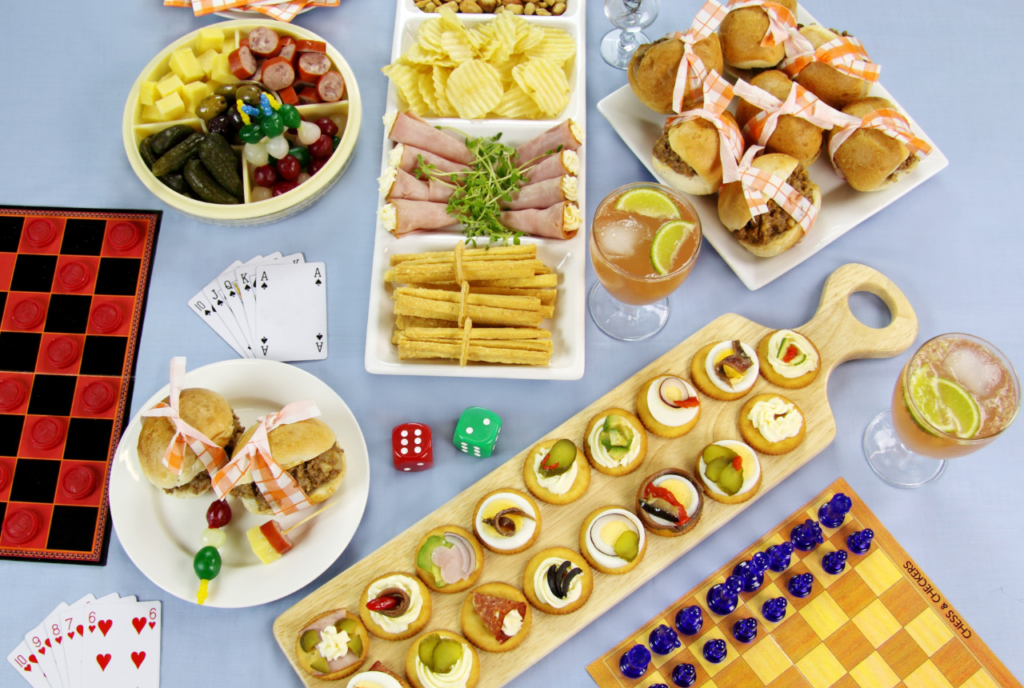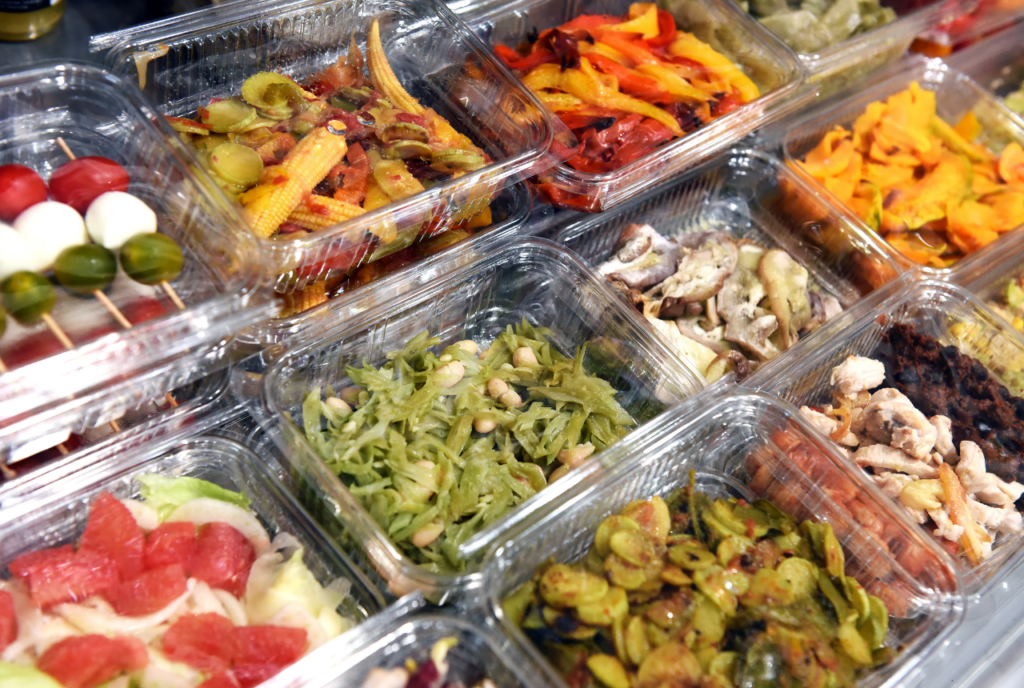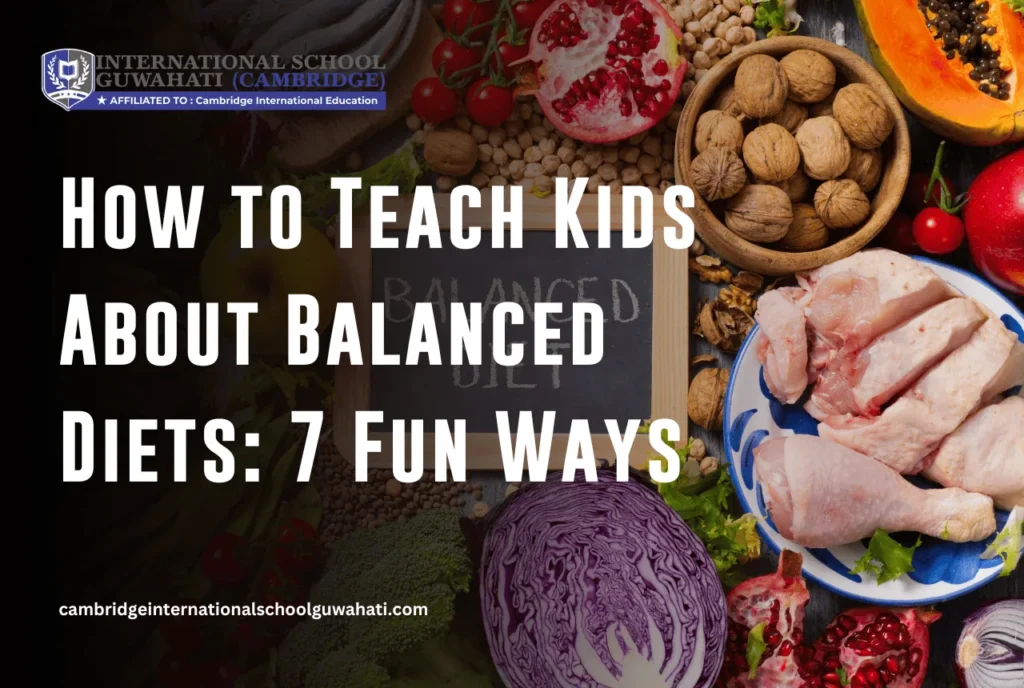![]()
Introduction
How to teach kids about balanced diets? Helping kids learn about balanced diets is one of the best gifts we can give them for a happy, healthy life. It’s not just about eating veggies or avoiding too much candy it’s about shaping habits that fuel their growth, sharpen their minds, and set them up for long-term well-being.
And here’s the good news: teaching nutrition doesn’t have to be boring or complicated! In this blog, we’ll dive into seven fun and creative ways to help kids understand the magic of healthy eating without turning mealtime into a lecture. Let’s make learning about food exciting, enjoyable, and delicious!
How to teach kids about balanced diets? Why it matters?
Kids are like little sponges—they soak up everything, from math equations to their favorite superhero catchphrases. So why not teach them about the magic of a balanced diet too? It’s not just about eating their greens; it’s about giving them the energy to play, grow, and dream big.
Of course, it’s not always smooth sailing. Busy schedules, flashy junk food ads, and the “but my friends eat it” debates can make healthy eating feel like a challenge. But schools like Cambridge International School Guwahati are stepping up, showing how nutrition and education can go hand in hand. By making healthy habits a part of learning, they’re helping kids grow up smart, strong, and ready to take on the world—one healthy bite at a time.
How to Teach Kids About Balanced Diets?
1. Make Meal Prep a Family Activity

Get your kids involved in the kitchen! Let them help plan meals and give them fun, simple tasks like washing veggies or mixing ingredients. While you cook, you can talk about food groups. For example, as you add spinach to a salad, you can say, “Spinach is a vegetable that helps keep us healthy and strong.” This makes learning about food fun and natural. Plus, when kids help make the food, they’re more likely to eat it—win-win! Cooking together also creates precious family memories that will last a lifetime.
2. Use Visual Tools Like Food Charts or “Eat the Rainbow” Games

Teaching kids about healthy eating can be as simple as making it colorful and fun! Create a bright food chart to show what each food group does for the body, or play an “Eat the Rainbow” game. Encourage your kids to fill their plates with colorful foods, like red apples, orange carrots, or green beans. You can also make it interactive by letting them decorate their own food charts with stickers or drawings. The more fun it is, the more they’ll want to participate. Soon, healthy eating will feel like second nature to them!
3. Start a Mini Garden at Home

Gardening gives kids a chance to learn about where their food comes from and how it grows. Whether it’s in the backyard or just a few pots on the balcony, growing fruits, veggies, or herbs can be both fun and educational. As your child waters the plants and watches them sprout, you can share cool facts about each one, like why carrots are great for eyes or how tomatoes help boost immunity. Kids love the pride of eating something they’ve grown themselves, and it creates a deeper connection with fresh, healthy foods.
4. Play Interactive Nutrition Games

Learning about nutrition doesn’t have to be boring! You can use fun online games or apps to make the topic exciting and interactive. If you want to take it up a notch, create challenges like a scavenger hunt at the grocery store where your kids find foods from every food group. You could also set up a little quiz during mealtime, asking them to name the healthiest ingredients in a dish. The goal is to make healthy eating feel like an adventure, sparking curiosity and active learning in the process!
5. Incorporate Storytelling and Books About Food

Stories are a powerful tool to help kids learn, especially when they’re fun! You can find books that weave in lessons about healthy eating, making the concepts easier to understand. Even better, create your own fun tales where characters’ strength or superpowers come from eating nutritious foods. Imagine a story where a hero gains the ability to jump high after eating a bowl of veggies! This approach adds a creative twist to healthy habits, showing kids that eating well is exciting and can have super benefits.
6. Organize “New Food Days”

Why not turn food exploration into a weekly tradition? Plan “New Food Days,” where your family gets to try something fresh together, whether it’s a new fruit, a funky-looking vegetable, or a dish from another country. Kids will be curious and excited to pick out what’s on the menu. It’s a great way to expand their taste buds and teach them that healthy food doesn’t have to be boring or repetitive. Every new food could become a fun family discovery!
7. Model Healthy Eating Habits

Kids are always watching and learning from you, so your eating habits can have a big influence. Don’t just talk about healthy food—show them how it’s done. Share why you enjoy choosing healthy meals, like saying, “I’m picking this avocado because it’s full of good fats that help keep my heart healthy.” This simple conversation helps kids connect the dots between what they eat and how it affects their bodies. Plus, when they see you making healthy choices, they’re more likely to follow your lead!
Tips for Encouraging Long-Term Healthy Eating Habits
Building long-term healthy eating habits in kids requires making nutrition feel positive and approachable. Start by avoiding labels like “good” and “bad” for foods. Instead, talk about “everyday foods” for meals packed with nutrients and “sometimes foods” for the occasional treat. This way, children learn that all foods can fit into a balanced diet, and they won’t feel guilty when they indulge in something sweet or salty.
Another tip is to teach portion control in a fun, simple way. Use everyday visuals, like explaining that a serving of rice or pasta should be about the size of their fist. This gives them a clear idea of how much food is just right without focusing on complicated measurements.
Lastly, emphasize moderation rather than restriction. Let your kids enjoy their favorite treats, like ice cream or chips, but make it clear that these are special additions to an overall healthy diet. When children don’t feel like they’re missing out, they’re more likely to develop balanced eating habits that stick around for the long term.
The Role of Schools in Promoting Balanced Diets
Schools are key in shaping healthy eating habits in kids. With the right programs, they can make a real difference in students’ understanding of nutrition. Teaching nutrition in a hands-on, interactive way—like through cooking classes or gardening projects—helps kids not only learn about food but also develop practical skills. For example, schools can offer activities that allow children to grow their own food or try cooking nutritious meals. These experiences turn abstract nutrition lessons into something fun and memorable.
Institutions like Cambridge International School Guwahati show just how effective it can be when schools integrate nutrition education into their curriculum. By focusing on a well-rounded education that includes nutrition awareness, the school helps kids grasp the significance of balanced diets and healthy living. This holistic approach ensures that students understand how food affects their energy, focus, and overall health.
By fostering a culture of health, schools can empower kids to make better choices, both in and out of the classroom, that will positively impact their long-term well-being.
Conclusion
Understanding how to teach kids about balanced diets is crucial for building lasting habits. At home, parents can use fun, engaging strategies to educate their kids about balanced diets, and schools like Cambridge International School Guwahati play a vital role by reinforcing this knowledge. Together, these efforts can set kids up for a lifetime of healthy choices, leading to better overall health and well-being.










